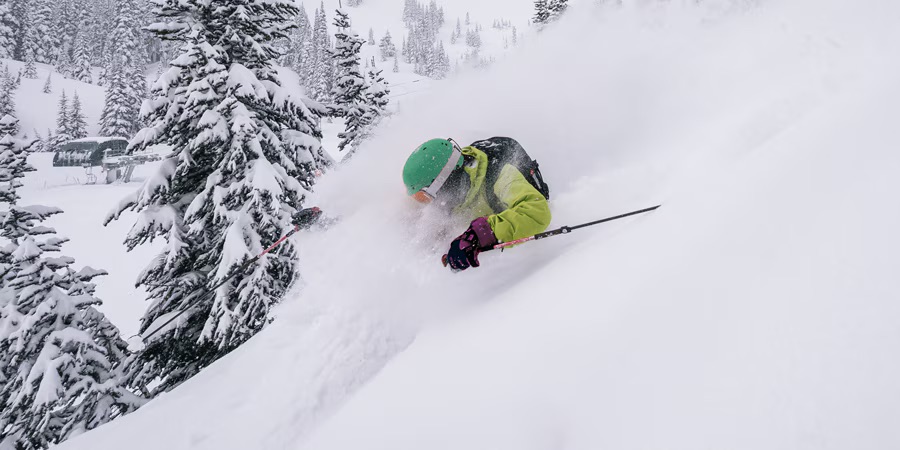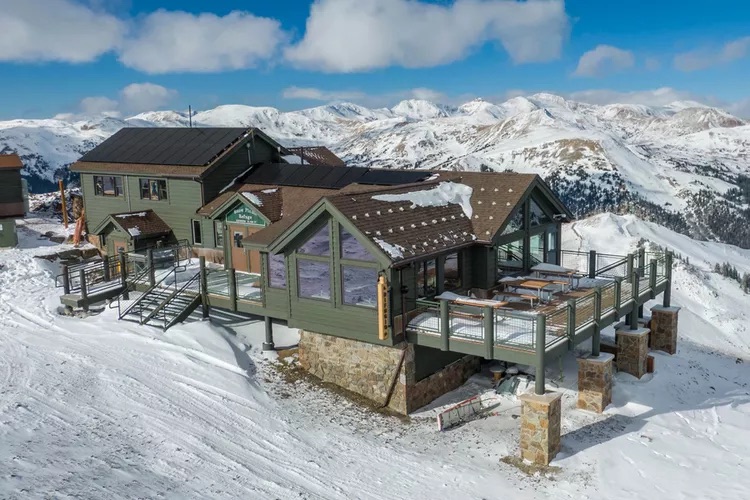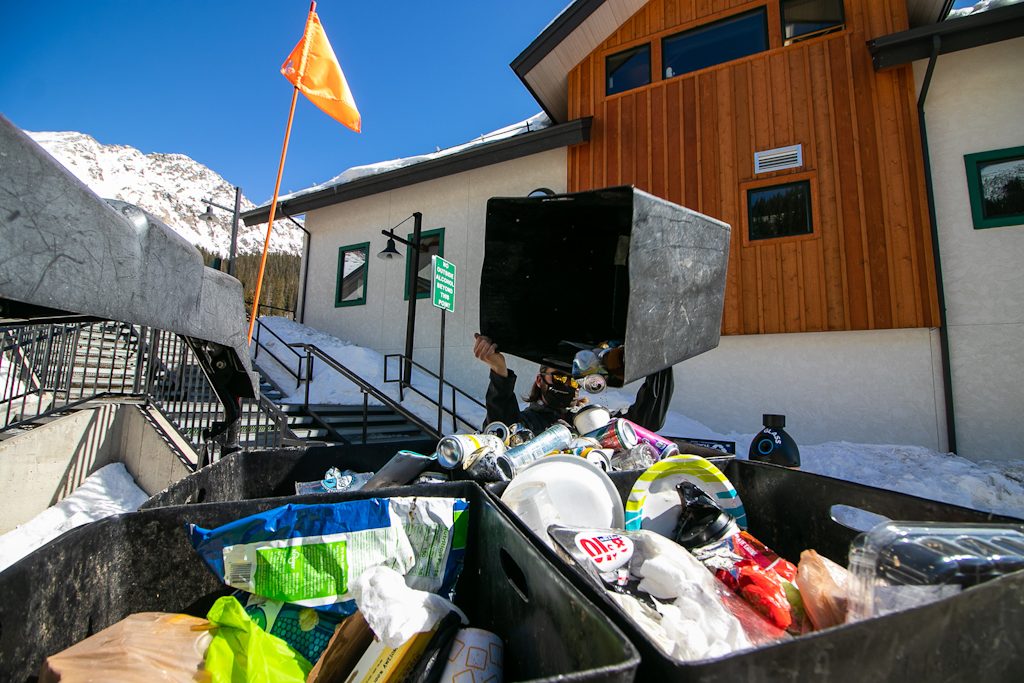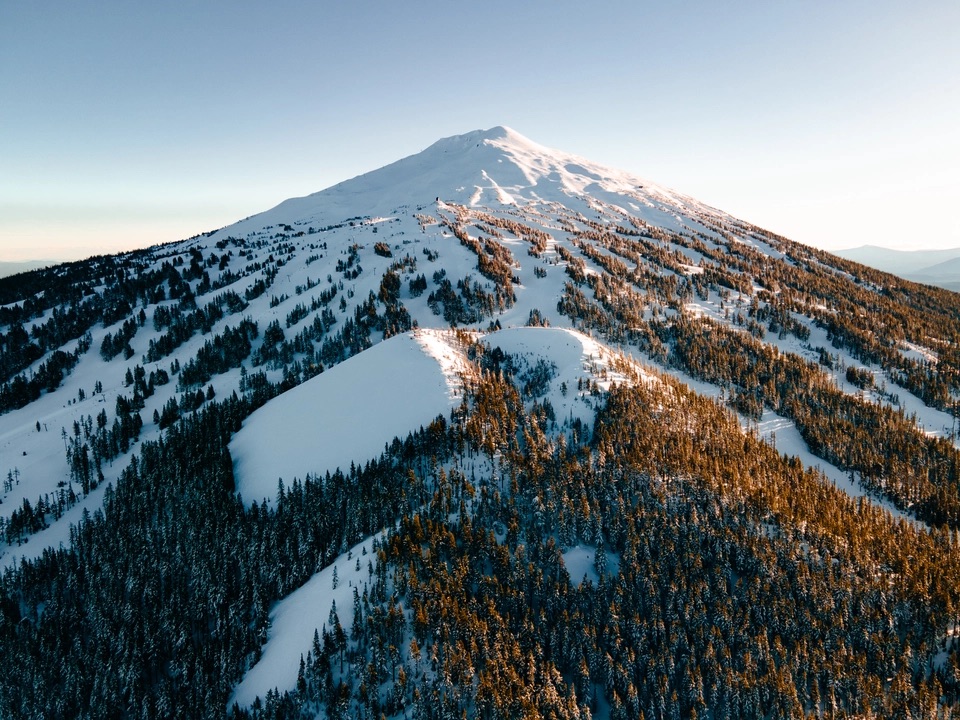
In an ever-changing world of combating climate change, some ski resorts are leading the sustainability charge. Taos Ski Valley in New Mexico was the first North American resort to go carbon neutral in 2021, and Arapahoe Basin in Colorado did it soon after, also going carbon neutral in 2023, just under two years ahead of its 2025 goal. Going carbon neutral means that the resort is offsetting all of the carbon that it emits into the atmosphere. Many other ski resorts and corporations are now following suit, with plans in place to go carbon neutral in the near future. But carbon neutrality is just the start for many of them, which begs the question; what are ski resorts going to do after reaching carbon neutrality? The answer: net zero.
There are several key differences between achieving carbon neutrality and achieving net-zero carbon emissions. Achieving carbon neutrality is done when a company purchases carbon offsets. Carbon offsets are pretty much exactly what they sound like. A company that is emitting greenhouse gasses and carbon can buy carbon offsets, which give them ‘credit’ for a certain amount of carbon emitted. Once a resort has bought the same amount of carbon credits as carbon emitted, it becomes carbon neutral. The money from buying these carbon offsets goes to either directly removing an equal amount of carbon from the atmosphere or to a company that is currently working on a product that will reduce carbon emissions.
Achieving net-zero carbon emissions comes after becoming carbon neutral. Net zero means that the resort either emits zero carbon or directly removes as much carbon from the atmosphere as it emits. Since emitting zero carbon is difficult, most resorts are aiming for the second strategy and just directly removing carbon from the atmosphere.
Carbon footprints are made up of three different parts, or scopes. Scope one carbon emissions come from directly emitted sources, which, in the case of ski resorts, are predominately vehicles and buildings. Scope two emissions come from purchased electricity, which is technically an indirect source. Scope three emissions are also indirect sources, like waste disposal and emissions from skier travel, to and from the mountain. Scope three emissions can’t be directly controlled by a resort, making them very difficult to track, but the resort still can advise skiers and riders about them.

Scope One Emissions: Stopping Direct Emissions in Their Tracks
Currently, only about one-third of Arapahoe Basin’s total emissions are scope one. Even though scope one makes up such a small percentage of total emissions, resorts still have to eliminate them if they want to reach net zero.
Fully electric snowcats are one of the ways to reduce scope one emissions. Taos has led the charge for electric groomers, as it was the first resort to deploy one during the 2023-24 ski season. The electric groomer proved successful for that season, and other resorts are now taking the same course of action as Taos, and deploying their own electric groomers, like Arapahoe Basin. In an email, Mike Nathan, the Sustainability Manager at Arapahoe Basin, informed SnowBrains about the resort’s intentions to move forward with electric snowcats.
“[The resort] tested Prinoth’s eHusky (the same snowcat Taos debuted last season) during the spring last year. We’re absolutely considering adding an electric groomer to our fleet, and when the time is right will absolutely be making that switch.

Other fully electric vehicles, such as snowmobiles, are also beginning to be used at ski resorts throughout the United States. Last season, Taos debuted nine Taiga electric snowmobiles along with a few electric snow blowers. In the near future, moving toward a fleet of all-electric resort vehicles might be the way to go for ski resorts to keep carbon emissions at bay.
Fully electric as well as hybrid snow groomers and other vehicles are not always the best option, as there have been a few problems that have been occurring for resorts that put them to use. The main problem is that these electric and hybrid groomers are simply not powerful enough to compete with the regular diesel-powered snowcats. The Head of Sustainability at the Swiss ski resort Andermatt, Carmen Carfora, said in an interview that hybrid snowcats cannot be used on exceptionally steep terrain and that they only work for flat or cross-country trails. This makes it very difficult for Andermatt to use these groomers on an everyday basis, which consequently is making it difficult for the resort to reach its plan to reach net-zero carbon emissions by 2030. This poses yet another question; how can resorts reduce scope one emissions from vehicles without going fully electric?
The answer to that is simple: using renewable diesel in vehicles such as snowcats. According to the U.S. Department of Energy, renewable diesel is made from fats and oils, such as soybean oil or canola oil, and is processed to be chemically the same as petroleum diesel. The only difference is that renewable diesel has lower carbon emissions. Arapahoe Basin is currently working on obtaining and using renewable diesel.
“[Arapahoe Basin] is currently working with other resorts in the Mountain West on scaling up our purchasing power to make renewable diesel more widely available in markets like ours, ” Mike Nathan, Arapahoe Basin Sustainability Manager, said. “Currently all our diesel-burning fleet vehicles could make the switch to a renewable diesel blend with little or no retrofitting needed. So it’s just a matter of getting fuel suppliers to send some of that precious HVO towards Colorado and the Central Rockies.”
The only problem that Arapahoe Basin has encountered so far is that the fuel suppliers are sending most of the fuel to California. Currently, California has very strict emission standards, so the fuel is in higher demand there. Once the fuel suppliers start moving farther east into Colorado it will be game on for the resorts to use renewable diesel.

Scope Two Emissions: Eliminating Emissions From Non-Renewable Energy
Renewable electricity is one of—if not the most—effective ways to reduce emissions, which was illustrated in Arapahoe Basin’s 2023 sustainability report. The report states that:
“Achieving 100% Renewable Electricity will get us closer to Carbon Neutrality than any of our other goals or initiatives, as it will mitigate 62% of our carbon emissions. As such, renewable electricity has become a centerpiece in A-Basin’s sustainability roadmap. With on-site solar arrays, utility and community-scale renewables projects, and an area-wide electrification plan, A-Basin’s renewable energy portfolio will grow to be the industry standard.”
Currently, switching from burning fossil fuels for energy to renewable, clean energy sources is easier than ever for ski resorts. This is made possible by the founding of companies such as Xcel Energy, an electric utility and natural gas company based in the United States. Xcel sources its energy from solar and wind farms throughout Colorado, something that most electric companies don’t do. This means that all of the companies, such as Arapahoe Basin, that partner with Xcel are getting their energy from clean, renewable sources. As shown by the Arapahoe Basin sustainability report, clean renewable energy is crucial in the process of reducing carbon emissions, and it is imperative that this process is made easier by companies like Xcel.
Arapahoe Basin is also committed to using solar energy as a source of onsite and offsite electricity. The resort sources most of its solar energy through Xcel from Jack’s Solar Garden, a unique solar farm in Longmont, Colorado, which uses the space around the solar panels to grow livestock and produce. Arapahoe Basin also sources solar at the mountain, although it only makes up about 1% of the total energy used. The resort builds solar panels on any building that makes sense to do so, such as the Il Refugio, the highest on-mountain restaurant in the United States. The Il Refugio also features the highest solar array in the U.S.

Scope Three Emissions: Tackling the Consumer’s Carbon Footprint
Scope three emissions are mostly controlled by the skiers and riders themselves. The most that ski resorts can do to cut down on these emissions is advise and offer incentives to skiers and riders. In Arapahoe Basin’s case, the resort is offering incentives for carpooling to the mountain, with free parking reservations. Summit County in Colorado also offers free bus rides to a select few mountains, including A-Basin. Scope three emissions are being reduced at Taos through similar actions, including incentivizing the use of public transportation and implementing a waste-reduction plan.
Waste reduction is another important component of reducing scope three emissions. Diverting waste from landfills is critical for the overall health of the planet, which is why Arapahoe Basin is planning to divert over 75% of its waste from landfills by 2025. This waste will instead be recycled or composted. A-Basin also partners with a program called TerraCycle to repurpose plastics that can’t be recycled.

Even after reducing all of these emissions, resorts need a plan to actively remove their remaining carbon from the atmosphere. In Arapahoe Basin’s case, this will include spearheading multiple projects to remove it. The goal of these projects is to support the ecosystem around Arapahoe Basin, which, according to Mike Nathan will bolster the ski area’s biodiversity and economic resistance while reducing emissions.
One of the projects that Arapahoe Basin has started is restoring wetlands around the resort. Wetlands are carbon sinks, which means that they can store large amounts of carbon. Wetlands, if preserved correctly, can store and trap carbon-containing sediment from runoff, and the plants in the wetlands can also utilize carbon for photosynthesis. Arapahoe Basin is taking advantage of the wetlands around the resort, and making sure that they are functioning properly in order to absorb as much carbon as possible. This method of reducing carbon emissions by tapping into nearby natural resources is incredibly effective, which is why multiple resorts around the U.S. are taking advantage of it. One of these resorts is Mount Bachelor, located in Bend, Oregon. Mount Bachelor burns the biomass left from forest fires around the resort as a source of electricity, which, while not only reducing carbon emissions, also reduces forest fire risk. Tapping into natural resources will most likely be a method that more ski resorts use in the coming years, due to its extensive array of benefits to the ecosystem.

Arapahoe Basin calls others to action, recognizing that the resort is not the only contributor of carbon emissions. According to Mike Nathan, the resort is attempting to work with western landowners in order to, “improve the way forest and rangelands are managed, in an effort to create more meaningful carbon sinks within the working landscape.” This can be done in many ways, including restoration projects and conservation efforts.
Taking Arapahoe Basin and Taos Ski Valley as examples, implementing similar procedures and strategies into their own operations is now more accessible than ever for many ski resorts. It is crucial that ski resorts keep trying to carbon offset or reach net zero, as that is the only way that the industry will be able to keep operating with natural snow in the future. Also, it is imperative that skiers and riders consider their carbon footprint, and how they might be able to reduce it, even by small amounts. Every little thing that can be done still has an impact on the environment. As Mike Nathan said, removing the carbon already in the atmosphere and reducing emissions will take some, “really creative and fast-acting tactics,” to avoid the harmful effects of global warming. Together, the ski industry as a whole must be up to the task of reducing carbon emissions so that skiing will be able to continue in the future.